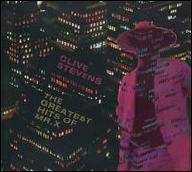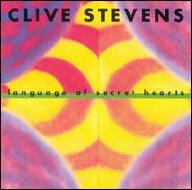Stevens was born in Bristol and studied saxophone with Eddie Jackman in the 1950s and Ronnie Ross in the '60s. His earliest professional recordings were with Fat City (Welcome to Fat City), Bob Downes (Open Music), and Manfred Mann's Chapter III in 1970, the same year he left the U.K. to study at the Berklee College of Music in Boston. There he met Ralph Towner and John Abercrombie. The pair introduced him to a host of other musicians creating music at the intersections of jazz and rock. After graduating with a degree in composition from Berklee, he attended the San Francisco Conservatory of Music, Guildhall School of Music (London), and the U.S. Naval Academy of Music, and engaged in private saxophone studies with Lee Konitz.
After creating a series of demos with his more famous friends, he signed to Capitol in early 1973, and a year later released two albums: Atmospheres (featuring Clive Stevens Friends) and Voyage to Uranus by Atmospheres featuring Clive Stevens. The former featured guitarists Steve Khan and Abercrombie, Towner (on electric piano and clavinet), and the Mahavishnu Orchestra's rhythm section, drummer Billy Cobham, and bassist Rick Laird. The latter included Abercrombie, Towner, drummer Michael Carvin, bassist Stu Woods, and percussionist David Earle Johnson. While the former set garnered massive critical attention, Voyage to Uranus seemed to slip into obscurity almost immediately before being resurrected as a fusion classic in the 1980s. Both have been reissued numerous times.
Stevens spent the remainder of the decade working with Larry Coryell, Gilberto Gil, Alan Price, Badal Roy, and others. In 1983 he formed Clive Stevens Brainchild to continue his funky fusion work. Using that moniker in 1984, he issued the electro-disco classic "Mystery Man" 12" followed by the long-player Semjase on Brazil's Vôo Livre label. The single still gets played in international dance clubs. He also played on Steve Hackett's on 'Til We Have Faces that year. Stevens Brainchild issued New York Street Walk on Germany's Frog Records the following year.
In 1992, Stevens recorded Language of Secret Hearts solely under his own name (for the first time) on Germany's Metalimbo label. Its first three songs -- "Melodie D'Amour," "In Between East and West," and "I Would Give Anything (To Be with You Again)" were all composed as a cyclic homage to primary influence Marvin Gaye. As a whole, the album mixed jazz, funk, rock, and even pop. In 1987, Stevens worked with Nana Vasconcelos on the percussionist's seminal Bush Dance long-player.
Stevens began to engage and combine world music traditions and pop styles as appendages for his forays into jazz, rock, soundtrack music, and electronic music. 2000's Millennium Jams was his first experiment in fusing them all. While it drew fine reviews from several jazz publications, it didn't sell and disappeared shortly after release. He wouldn't put out another album until 2005 when he formed the Mandorla project to release the electro-world-jazz outing Invisible Intelligence on Planet 8; the album has since become a cult classic among DJs and EDM producers. 2008 saw the release of The Greatest Hits of Mr. X, under his own name. It is a dancefloor-centric collection of tunes that crisscross jazz, funk, fusion, new age, and global sounds with the dancefloor. The following year, he published his first book, Stardust Transmissions: Urban Poems and Lyrics for the 21st Century Vol 1.
In 2010, Stevens released Bacana Beat Club as Mandorla, his final album. He spent the last nine years of his life doing production work, writing, and traveling, His second book, a memoir entitled This World and Other Worlds: Quest of a Light Warrior was published in 2017. Stevens died in 2019. In 2021, Voyage to Uranus was reissued in a deluxe edition. ~ Thom Jurek, Rovi
|
1
|
|
Nastassja |
|
2
|
|
First Time Bliss |
|
3
|
|
Beat 17 |














